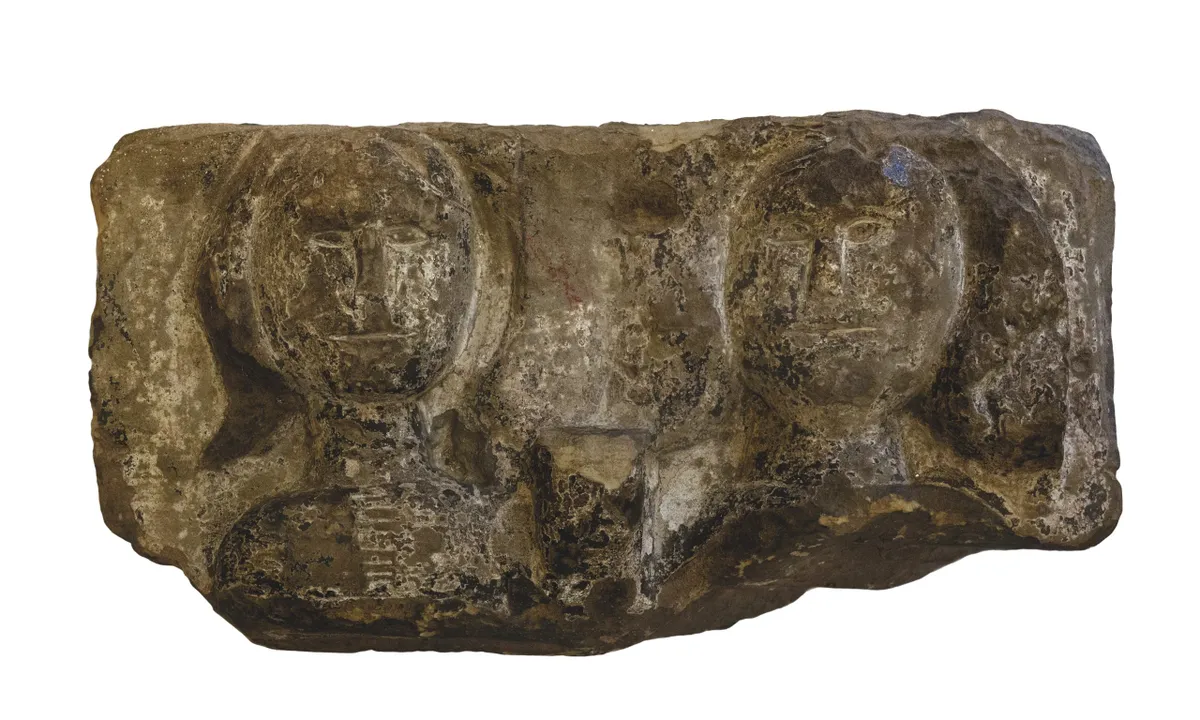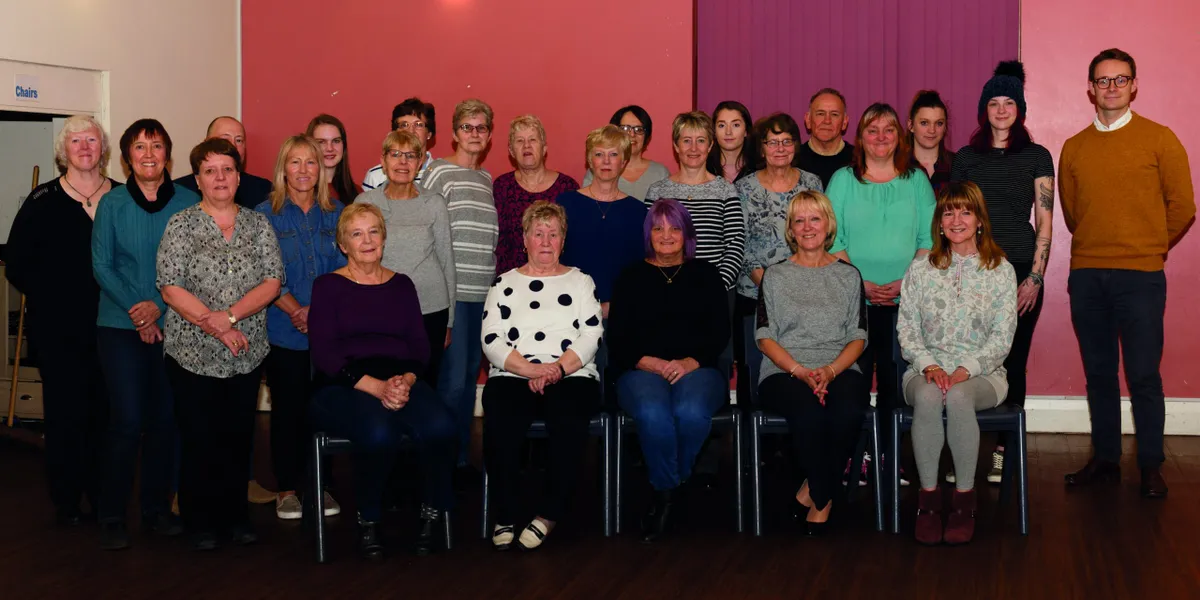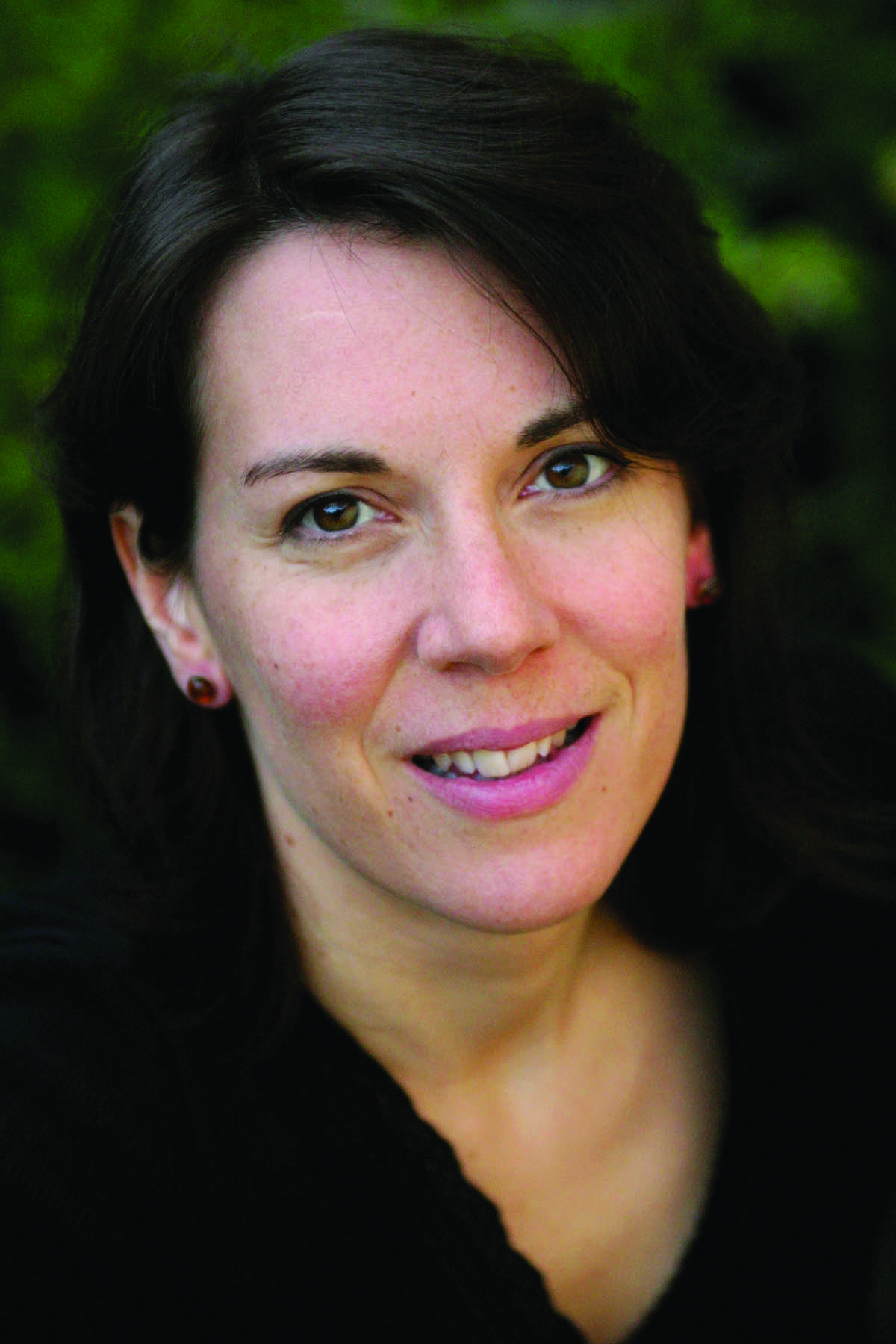On the night of 18 February 1832, Polly Button was lured out by her married lover, whose child she was carrying.
They walked across fields behind her cramped home in Nuneaton to a barn called Astley’s Hovel. Polly was never to return to her five young children, who depended on her entirely. Her body was found the following morning with her throat cut.
“My wife Tina has always known that she was the descendant of a person who was murdered,” explains Stephen Moore. “Her mum used to point out the street in Nuneaton where their ill-fated ancestor lived. Five years ago I decided to write a book about Polly’s tragic life.” The Undoing of Polly Button has just been published, and the director Ken Loach, who was born in Nuneaton, has described it as a “terrific story”.
Stephen has painted a clear but dark episode in Nuneaton’s history, all reinforced with fascinating and meticulous detail. However, this is much more than a book about a historical murder, because Stephen has researched all of Polly’s five children and discovered that she has more than 1,000 living descendants. The project is snowballing to include them all.
Polly remains at the heart of the story, and her life is Dickensian in its drama and tragedy. She was born as Mary Green in Nuneaton in 1792, to parents who worked in the silk-ribbon trade. Her nickname ‘Polly Button’ may have come from ‘Molly’, a nickname for ‘Mary’, and her prowess as a weaver and needleworker. The silk-ribbon trade was a thriving industry in Nuneaton at the time, and the town depended on it.
Between 1814 and 1829, Polly gave birth to five children, all by different fathers. “It was a classic tragedy. She was about 20 years old when she became pregnant by Daniel Wagstaff, who was from a wealthy local family. Socially they were unequal, and he refused to marry her. This abandonment was the beginning of Polly’s undoing, and her prospects spiralled downwards. She faced the social stigma of being an unmarried mother and the anguish of how to provide for her baby, Elizabeth.”
Under a filiation (illegitimacy) order, Wagstaff was ordered to pay 3s a week for his daughter. However, when he died in 1824 the maintenance stopped, leaving Polly in financial distress.
History repeated itself when Polly had two more children with men who died before their offspring reached adolescence: a son William and a daughter Hannah, who is Tina’s great great grandmother. She also had two more daughters, Ann and Jane, in the 1820s, by separate fathers.
“It was desperately sad that three of the fathers died young and the family was left so vulnerable, especially given the icy blast that Nuneaton was about to suffer.” Stephen’s research into life in Nuneaton in the 1820s makes for shocking reading.
End of an industry
“The move to free trade in 1826 exposed the town to competition from cheap, high-quality ribbons from France. Hand looms were being replaced by power looms, making cottage industry obsolete.
“Nuneaton suffered total economic collapse in the 1820s. The consequences were poverty, disease, social unrest, suicides and bankruptcies. Amid all of this, Polly was a lone parent struggling to raise five children.”
Living conditions became squalid, and remained so for many years. Mortality rates were so high that the Government commissioned a report by inspectors, which Stephen found online and at the local library.
“Nuneaton had open dung heaps; foul, stagnant pools; and privies with no drain that were exposed to the highway. Its inhabitants were starving, and soup kitchens served up gallons a day to keep them alive.”
Polly was enduring such hardship when she met her final partner, John Danks. He was a farm labourer from Astley, near Nuneaton, who moved to the town and later married his second wife Jane Floyde. They lived close to Polly’s home in Abbey Street.
Danks and Polly must have begun a relationship in around 1828, because a year later their daughter Jane was born. “A filiation order against Danks was secured, but he had to be apprehended to attend the hearing. Clearly, he was reluctant to acknowledge responsibility for his child.”
However, Danks didn’t pay maintenance to Polly, and by 1832 he owed her the considerable sum of £4 8s 6d. Polly was pregnant by him again, and the situation began to escalate. His wife Jane knew about the affair, and had heated exchanges with Polly. Did she know about her husband’s enormous debt, however? Another warrant was issued for Danks’ apprehension, so perhaps he began to panic.
On the fateful Saturday evening, Danks sloped across the fields behind Polly’s house, believing he was unseen, and called on her to come out with him for a walk. Polly made him wait because her children were hungry and she had to go out to buy bread. She then locked them in the house for safety, and was helped over a low perimeter wall by Danks. She never returned, and her mutilated body was found the next day by the landowner. It’s impossible to imagine the anguish that the children must have suffered on learning of their mother’s death.
The hue and cry went up for John Danks, who everyone knew to be Polly’s lover. He was arrested and appeared a few days later in front of an inquest, which Stephen found reports of on the British Newspaper Archive.
“Apparently, Danks confessed to Constable Haddon, who detained him. However, he pleaded not guilty at his trial which took place at Warwick Spring Assizes on 30 March 1832.”

Brutal attack
Newspaper reports of the trial provided grisly detail of Polly’s demise. She had been knocked to the ground and her head almost severed by slashes to the neck. A bloodstained knife belonging to Danks was found near a hedge 50 yards from Astley’s Hovel.
Several witnesses testified for the Crown, including Polly’s nephew James Green, who saw Polly climb over the wall to the waiting Danks. “James said it was a clear night, so I checked this against weather conditions in records held by the National Meteorological Library and Archive. The night was very dry, so James’ testimony of good visibility seems to be correct.”
A trail of bloodstains revealed that Polly had rallied herself and tried to drag herself home, despite being heavily pregnant and having mortal injuries. “Sadly, her character was put on trial, with one newspaper describing her as a prostitute and another as 'a single woman of loose character'. If she did fall into prostitution, it must have been through desperation.”
The evidence against Danks was overwhelming. Justice Parke condemned him to death, and he was executed on 2 April 1832 outside Warwick Gaol. His body was given to Birmingham Medical School for dissection.
Polly’s story is operatic in its scale, with a tragic heroine, a desperate villain and a dark industrial setting. Stephen could have focused purely on the key events, but he has enriched the book by exploring the role of weaving communities and the impact of industrialisation, as well as tracing the fortunes of Polly’s descendants.

Living legacy
“I was curious to discover what happened to Polly’s children and grandchildren,” he explains. “Using Ancestry, Findmypast and FamilySearch I mapped out all five lines. I was thrilled to discover that Polly has at least 1,000 living descendants.”
Stephen then began the painstaking process of contacting them to explain her story. “I used social media, email and letters. So far, I’ve connected with 160 descendants and set up a family group on Facebook. We have members who live across Britain and some in Australia, New Zealand and Canada.”
Convincing total strangers that they have an ancestor who was murdered 190 years ago was tricky. “Once they got over the initial disbelief, most were fascinated by Polly’s story and keen to connect with other descendants. This year, to commemorate the anniversary of Polly’s death, 70 of us met up in Nuneaton. It was so satisfying. They’re lovely people and we enjoyed a warm, friendly, sociable event. Even descendants of John Danks joined us, which was an interesting dynamic.
“I led everyone on the ‘Polly Trail’, which is a guided tour that I run around the key scenes of the murder. I was amazed at how fascinated people were by it.”
All of Stephen’s author profits are being donated to charity, including a women’s refuge in Nuneaton. “It felt right to do so. People have really got behind the project and I’ve had so much help free of charge from local historians, librarians and genealogy groups.”
Stephen hopes that Polly’s character resonates through the book. “She raised five children who survived into adulthood during a time of extreme poverty. Her fighting spirit must have kept her going as a lone parent struggling to raise a family.” Polly’s life was cut short, but her memory lives on through Stephen’s fascinating work.







